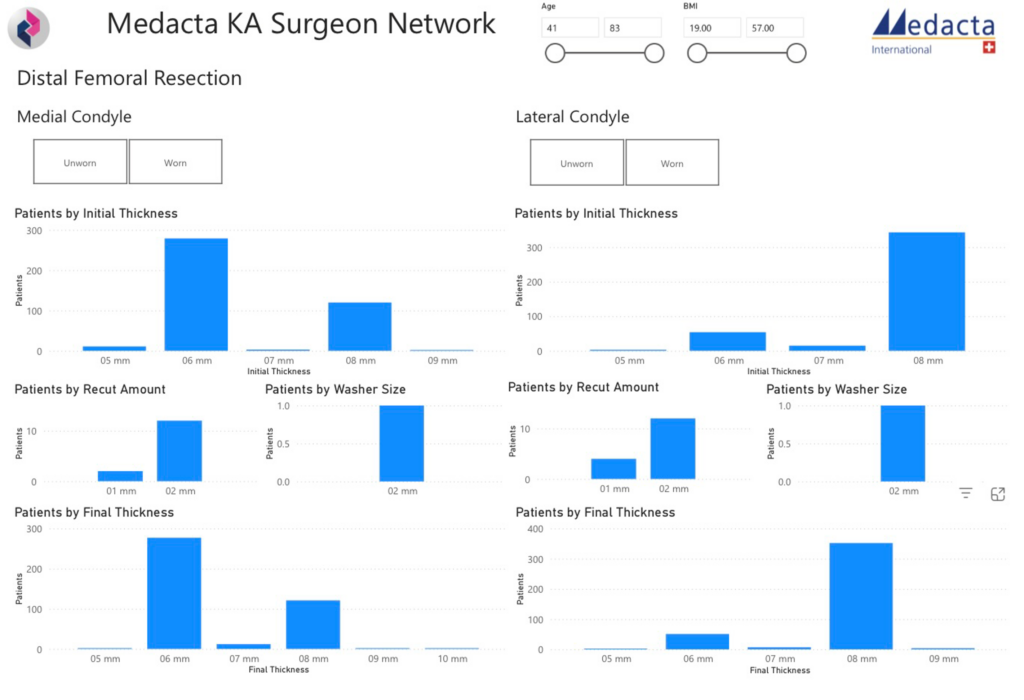Improving patient outcomes is always a priority for revolutionising healthcare. Enhanced resource allocation, streamlined assessments, testings and surgeries, and better staff recruitment can all contribute to speedier times towards treatment. Informing the way that we improve these factors is data.
A digital overhaul regarding reporting and scheduling is finally being honed by major healthcare providers around the world, and analysis of historical surgeries can grant pivotal insights into improving how they can be conducted more effectively in the future. This is especially crucial for revisions, whereby orthopaedic professionals look to correct or re-do previous surgeries.
With a comprehensive revisions database as a north star for orthopaedic surgeons, the standardisation of better patient pathways may be possible. Here’s why.
The projected demand for revision surgeries
One of the main contributors to revision surgery becoming more prevalent is an ageing population. By 2050, the UN Department of Economic and Social Affairs predicts that 25% of the world’s population (2.1 billion) will be 60 years or older. That’s double the number from 2024. Those in elderly age categories are more susceptible to musculoskeletal disorders – osteoarthritis, fracture, degenerative diseases etc. – which greatly increases the numbers of revision surgeries to recorrect patient outcomes.
With that comes a growing weight on the global healthcare system to accommodate those needing revision surgeries. It stretches staff and medical supplies, as well as the efficiency between early appointments and final surgery dates (as well as long recovery times that can limit hospital bed capacity). Being able to optimise the operations of hospitals, care centres and more – and to enhance the personalised pathways for each individual patient in need – takes closer readings into the success and failures of past surgeries, all gathered by advanced technologies for data gathering and analysis.
The helpers and hindrances to revisions
On the one hand, advancements in orthopaedic devices are facilitating more successful revision surgeries, resulting in tangible data that can be assessed to reduce complications in future revisions and impact the successes of rehabilitation, too. Robotics are a driving force assisting surgeons with innovative, precise procedural techniques. Bioactive materials and 3D-printed implants contribute to anatomical fit joint replacements, with these patient-specific implants can be created off the back of MRIs and CT scans.
Unfortunately, what holds back the use of medical technologies are strict regulations around their approval. Rigorous testing has to take place before any new devices hit the general market, while their ongoing safety standards for post-surgery have to be continuously monitored.
Key revisions innovations offered by data
Luckily, data collection offers lifelines to get approvals underway, address regulatory hurdles and stop delays in the manufacture of such devices in orthopaedic revisions. And that’s just the start:
- Speeding up time-to-market: empirical evidence (in this case, clinical data) can showcase the safety and efficacy of innovative new products, justifying the credibility of manufacturers for any submissions to regulators and making them more readily available for surgeries.
- Enhanced product creation: these unique evidence-based factors can also determine the development of bespoke products better suited to individual patient needs. Joint reconstruction, and spinal and trauma implants hold significant market share.
- Pinpoint revision outcomes: researchers are able to gain high-quality insights into revision surgeries, including any failures around infection, pain points or instability. From here, they can better refine surgical procedures and raise care standards through following a comprehensively constructed framework.
- Using registries to assess trends: datasets can track demographics of patients, as well as their pre- and post-operative conditions over time which, when available through a registry, can signal risks associated with certain segments of patients undergoing treatment.
- Assessing minimally invasive procedures: detailed data helps compare the long-term outcomes between emerging and traditional practices in regards to complication rate, impact recovery lengths, and patient comfort, advancing the evolution of revision surgeries.
- Effects on insurance: through accurate data collection for revisions, it’s easier to showcase cost-effectiveness and patient satisfaction. In turn, this can persuade insurers to reconsider their policies by highlighting benefits for more timely treatment (or, indeed, the dangers or prolonging it). With insurers more agreeable, much-needed procedures can be conducted without significant financial burdens.
Driving consistent improvements to patient outcomes
Data collected from historical revision surgeries is far from stationary; instead, it is directly actionable to have positive knock-on effects for patients requiring replacement surgery and any post-operative rehabilitation throughout their pathway.
When best practices are established through documented data that assesses the pros and cons of procedural operations, the next step encouraged by orthopaedics is an establishment of a revisions database. Multiple registries, when cross-referenced across the industry, can help benchmark patient outcomes and aspects of post-revision surgery. With tried-and-tested improvements noted for revisions solutions, the field can compile stringent standards.
The orthopaedics speciality, while suffering tough waiting list backlogs due to the appetite for surgery, ageing patients, and the pandemic, is continuously improving. Gaps in knowledge around much-needed revisions are currently being researched and revised, but with a constant reiteration of the most successful capabilities (as shown through data collection) the satisfaction levels for practitioners and patients alike.




